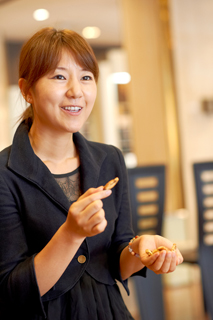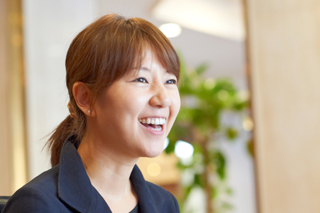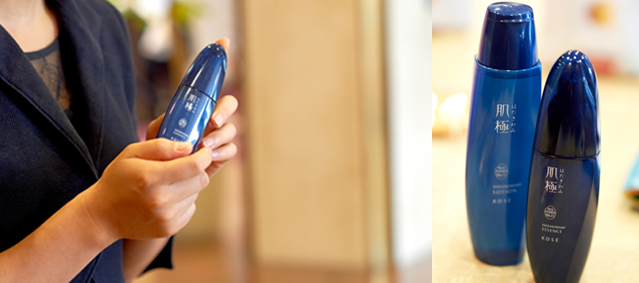Takako Endo on Building a Modern Arare Brand from Tradition
Oct 16,2013
Takako Endo on Building a Modern Arare Brand from Tradition
Oct 16,2013
Rice has been an indispensable part of the lives and meals of Japanese people since antiquity. For this series, we spoke with six women who are experts in the fields of food, health, and beauty about rice and its inherent power.
—Could you tell us what led you to start Tsui Tsui, your arare and sembei rice biscuits and crackers business?
It all began when a friend gave me some arare rice biscuits that were incredibly delicious. I found out the arare were produced by a long-established rice confectionary factory in Niigata. But I also learned that their main customer segment was older people in their 70s and that their sales were on the decline.
I thought it would be a shame for such delicious arare to disappear, and I figured that there must be a better way for them to market and sell their products. So I approached the factory, obtained their approval, and set up a company to develop and sell their products.

—How did you go about planning and selling the products?
The products themselves were already of very high quality and supremely delicious. The rice used in the products is Wataboshi, a sweet and delicious glutinous rice cultivated by contract farmers who use very few pesticides. The rice is polished, pounded into mochi rice cakes while fresh, and then formed into arare. The salt they use is finely ground in a stone mill, and no synthetic colorants or preservatives are added. Skilled artisans take the time and trouble to perfectly craft each piece. I was very impressed by how meticulous the process was.
I’ve heard that many arare brands are made with rice fragments or rice from Thailand. So arare made with these ingredients and production methods are quite unusual even in Japan. Arare are made with simple ingredients, so the quality of those ingredients is immediately apparent. Customers compliment us on our delicious arare that retain the flavor of rice, so I think they rate highly on that aspect.
On the other hand, when I visited the factory for the first time, the company’s sales and promotion methods were not very appealing. That’s when I came up with the idea of producing arare that younger people and non-Japanese people would enjoy. Although I personally love arare, younger people would react with disappointment when given arare, saying: “Oh, this is just arare.” I met my French husband right when I launched the business, and he told me that non-Japanese were not likely to go for arare because of their strong smell and unappealing colors. I was discouraged. Younger people and even my French husband did not appreciate the genuine deliciousness of arare.

So I got started on developing new flavors, such as mozzarella and herbs, that would appeal to younger people and non-Japanese people. We created flavors like Camembert and seafood curry, which are now very popular. We hear from customers that these new flavors of arare pair well with wine. And my husband is a huge fan of the products.
—What is your process of developing products?
I gather all our employees and we brainstorm ideas together. At the start of this year, we made mochi from Wataboshi, and from the taste of the mochi, we considered what flavors to develop. Once we come up with some ideas, we immediately take them to the artisans who make the products. In the early going, they were reluctant to try out new products and flavors. But now, they are very cooperative and work alongside us to create the new flavors. One big reason for their change of heart was the precise feedback that we get now from customers. When we tell them that customers are saying the arare are great as gifts for home parties or that they go well with wine, the artisans may blush a little, but they are also very delighted.
We are very particular about our packaging. When people think of arare packaging, they are bound to imagine either metal tins or dull-looking plastic bags. To dispel this image, we hired a Finnish designer and worked on ideas with all our employees to come up with packages that people would be delighted to receive as gifts.

—This year, you began selling rice as well.
Customers told us that they’d like to eat the rice that our arare are made from, so we made the decision to sell rice. We sell two varieties: Wataboshi, a glutinous rice, and Ganso Koshihikari. Wataboshi is known for its sticky texture and sweetness, and it is delicious in steamed okowa glutinous rice dishes or sekihan red bean rice. Ganso Koshihikari is the original variety of Koshihikari before the variety was enriched. It has a chewy texture and is very sweet. This rice is primarily grown by farmers solely for their own consumption, and while it is delicious, it is prone to pests and is difficult to cultivate. We only sell small quantities, as the rice is not widely cultivated, but we encourage people to try its unique taste.
—Since launching your business, you’ve brought several products to market. What are you future plans?
One is to communicate more clearly the producers’ sentiments to consumers. We want more people to understand the deliciousness of our products and rice that are produced with hard work, earnestness, and great care. And we hope our message of exciting arare will resonate with lots of people.
I named my company Tsui Tsui [a Japanese expression used to describe doing something unintentionally] from the idea of producing rice crackers so delicious that you reach out for them spontaneously and that make people smile spontaneously. I would be delighted if this concept reaches lots of people, regardless of age or nationality.
For our next step, we have decided to open a store in Kuala Lumpur in Malaysia, as we aim to gradually expand overseas.

—You must be exceptionally busy every day, what with regular visits to the Niigata factory, selling rice, and working on setting up a store overseas. How do you cope with your meals?
Generally, I make everything myself. My basics are Japanese cuisine, rice, and miso soup. My husband is French, so having miso soup every day is a bit much for him. So he makes his own meals. We quite often share the food we make together. Having said that, my husband has become a much bigger fan of Japanese food than previously. For someone who never ate rice, he now obsesses over the rice cooker and the water used to cook the rice. [laughs]
I think I developed a keen sense for tastes from my father, who is very particular about his food. And that sensitivity has only gotten stronger now that I work in the food industry. Instead of venturing out to find a new delicious restaurant, I prefer to make something I’m certain is delicious myself.
That’s why I experiment with various homemade recipes. I make ginger syrup by soaking ginger in honey, and I make udon, pasta, and other noodles starting from just flour. Not only is this more delicious, but I rarely get colds or other illnesses anymore. And by making things myself from scratch, I make lots of discoveries like what ingredients the things I eat daily are made from or how the taste of ingredients affects a dish.

—Being so busy, do you have any skin concerns? And you used Hadakiwami skin cream this time: how was it?
My biggest concern is dryness. And I hate getting rashes when my fatigue builds up. As I age, I’m noticing a loss of firmness in my skin.
Hadakiwami skin cream is great because a little goes a long way and it moisturizes well, yet it feels light and non-greasy. The RicePower® No. 11 component in Hadakiwami is said to enhance the skin’s natural functions and improve moisture retention, which is perfect for my dry skin. I also love the relaxing fragrance.
Whenever I need a boost to get through a crucial juncture, I’ll eat a rice ball to get a burst of energy. This same power of rice also works wonders for my skin. I really appreciate the power of rice.

—Despite your calm demeanor, your passionate spirit shines through. I can really sense the source of your strength that drove you to start a company at a young age and to steadily achieve your dreams. Thank you so much.

CEO of Tsui Tsui, Inc.
CEO of Tsui Tsui, Inc.
In 2008, at the age of 28, Endo founded Tsui Tsui, Inc., a premium arare rice cracker brand that you want to reach out and eat spontaneously. Her mission is to become the world’s leading arare company that makes products people enjoy in Japan and around the world. She won a Nikkei Woman of the Year Award in 2013 in the Career Create category. She currently operates outlets in Lumine Kitasenju and elsewhere.